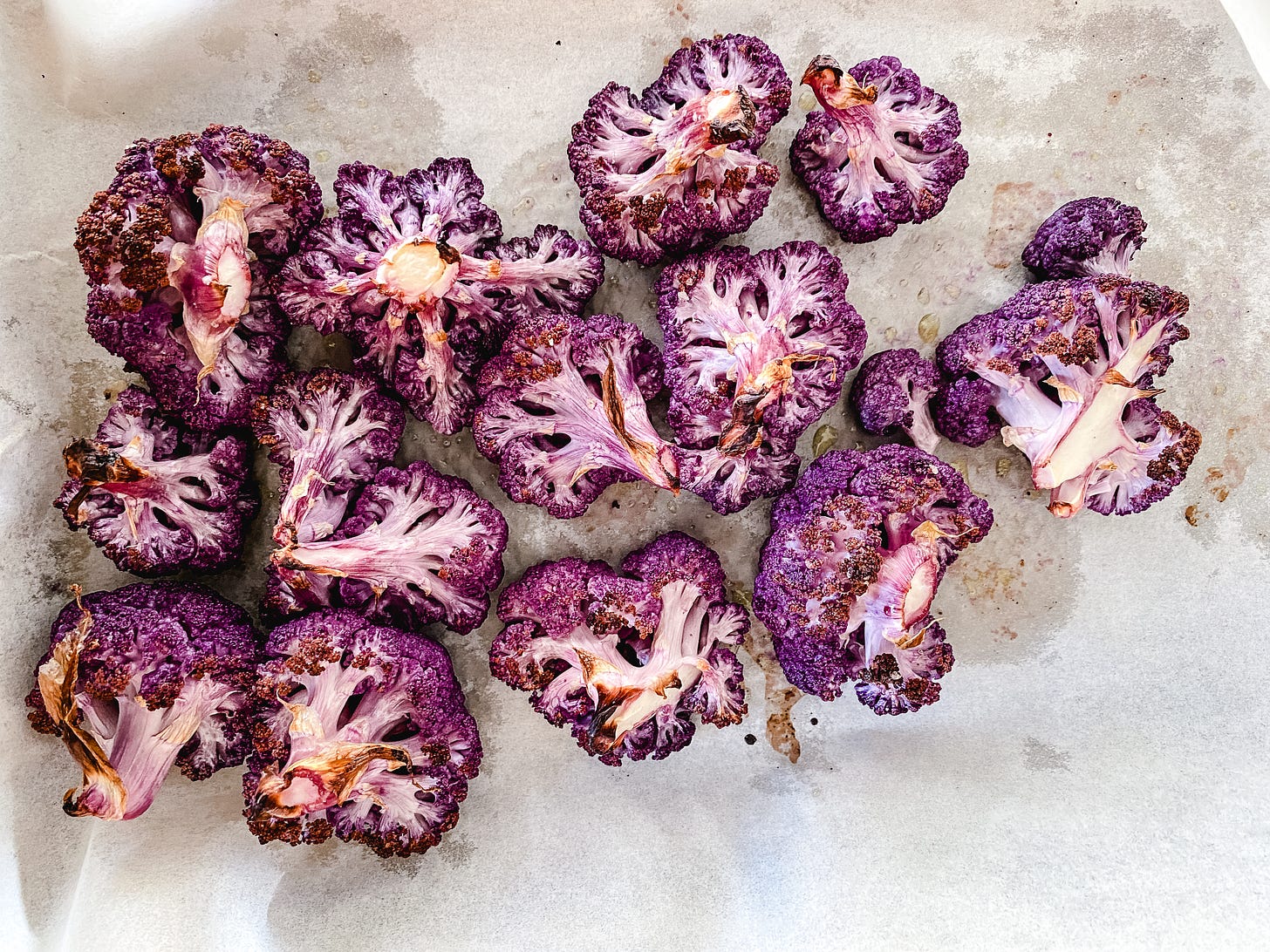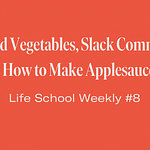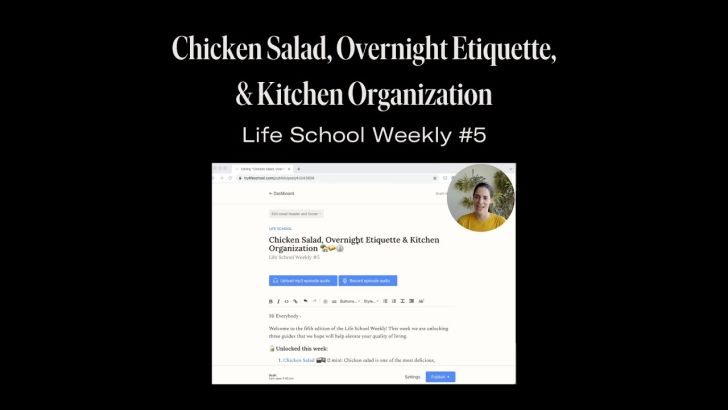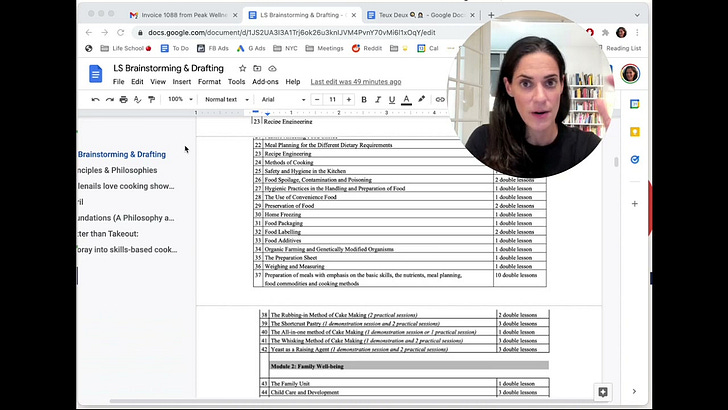This lesson is 750 words, a 3 min and 0 sec reading time. It is part of How to Cook With Air & The Fall Collection.
📍 Introduction:
It's hard to go wrong with roasted vegetables. Almost everybody can eat them. They serve as a great side, base, or main dish. They are tasty hot or cold. A number of chefs even believe they're best at room temperature!
You can roast many vegetables at once for food prep and re-heat/spruce them throughout the week. Or simply knock some out while you are making something else.
When a vegetable is nearing its peak ripeness (or even a bit past), just pop it in the oven. See below for instructions for basic roasted vegetables -- but do get creative! There is a lot you can do with roasted veggies.
✔️ Instructions:
Preheat oven to 400° (or 450° if cooking many items)
Prep your veggies (wash, dry, trim, chop)
Season with olive oil & salt; toss in a bowl to coat evenly
Line baking sheets with parchment paper
Dump veggies on paper, place in the oven
Cook until tender
🥕 Seasonal Vegetables for Roasting
🗓 Year-round (mostly): Broccoli, Cauliflower, Potatoes, Sweet Potatoes, Yams, Carrots, Beets, Winter Squash (e.g., Acorn, Butternut), Garlic, Onion
❄️ Winter: Brussel Sprouts, Celery
🌷 Spring: Asparagus, Green Beans, Artichoke, Turnips
☀️ Summer: Corn, Bell Peppers, Eggplant, Green Beans, Tomatoes, Summer Squash
🍂 Fall: Pumpkin, Brussel Sprouts, Green Beans, Bell Peppers
⏰ Roasting Time Guide
10-15 min: Zucchini, squash, bell peppers, broccoli, asparagus, green beans, mushrooms
20-25 min: cauliflower, brussels, butternut/acorn squash, radish, eggplant
30 min +: Beets, potatoes, sweet potato, carrots, cabbage
📝 Notes, Tips & Tricks:
Cooking:
Ensure vegetables are dry before cooking/coating with olive oil. This helps them brown instead of steam.
Cut veggies to consistent sizes, so they cook evenly
Don't skimp on oil
Don't crowd the pan, or items will steam instead of brown
Sugars in vegetables seep out & can scorch pots and pans easily. Use parchment paper to eliminate the need to scrub or even wash at all
Creative seasonings (e.g., herbs, oils, spices, garnishes) can make all the difference. Experiment!
If you try roasting one new vegetable each week, by the end of six months, you will have covered most of the ones you will ever roast! Experiment to keep things fresh (& expand your knife skills repertoire)
Save the stems, leaves & stalks while trimming down vegetables for roasting. These can be roasted as well, turned into pesto, or saved for making stock.
Meal Prep & Storage:
Roast a bunch of vegetables at once for ultimate efficiency. Preheating the oven takes awhile. So does getting out all the gear & cleaning it up. By knocking out all your veggies at once, you save yourself hours later in the week.
When roasting different vegetables, start with those with the longest cooking time (root veggies, potatoes). Work your way to those with the shortest cooking time (tender ones like brussel sprouts, leafy greens). You can wash & trim the short-cooking vegetables while the longer cooking ones get a head start.
Roasted vegetables taste great at room temperature. Take them out of the fridge ~1 hr before you plan to eat them so they can warm slowly & evenly.
Roasted vegetables store very well, either at room temperature overnight or in the fridge for about a week. They don't mold, sour, or rot nearly as much as other items.
A few days in the fridge will actually make roasted vegetables taste better as they settle into themselves and absorb the seasoning.
Store vegetables in clear containers so you can easily see them & noodle on creative ways to spruce them up
Leave heartier vegetables out in a big bowl to inspire you to cook them. Many don't do well in the fridge anyway.
Serving:
Roasted vegetables can be the base for unlimited dishes (e.g., omelets, poached eggs, sandwiches, salads, soups, and even snacks). See below for some recipe inspo.
Spruce up roasted vegetables with a quick sauté (e.g., with olive oil and garlic) throughout the week to add some flair. Or simply reheat in the oven at 250°.
Oil helps brown, cook & flavor the food. Many varieties work well (e.g., olive, coconut, peanut, duck fat, sunflower, grapeseed, canola, bacon grease).
Sturdier herbs hold up well without burning (e.g., thyme, rosemary, oregano, tarragon, sage).
A spritz of lemon juice or other acids at the end of cooking brightens flavors.
🎓 Further Study:













Roasting Vegetables